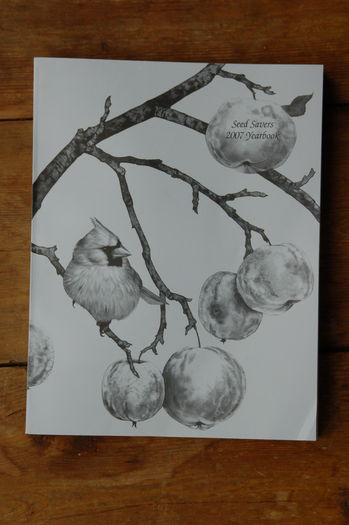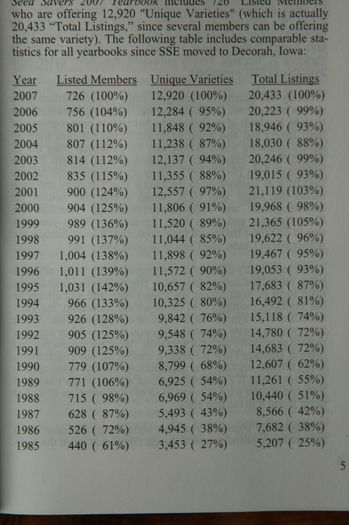
It arrived a few days ago, and I’m really excited. The 2007 Seed Savers Exchange (SSE) Yearbook, their annual list of member offered seeds and plant samples. Nearly 500 pages, and 12,920 unique varieties of plants. The number of unique varieties offered by the SSE is at an all time high! I have just enough time to order a few last things for the garden…
With the the excitement also comes some more sobering news, a 4% decline in the number of listed members. A listed member is one who offers at least one plant to other members via this annual yearbook. This decline comes after more than a decade of steady declines.

With fewer members actually sharing materials, the long term viability of the SSE is in jeopardy.
In the introduction, a few explanations were offered for the decline in listed members. First the popularity of their Internet sales, and the ease of being able to place small orders without having to pay a membership fee, may have caused some of their less devoted members to drop out. Another is that some members have complained that seeds they go to the trouble of offering, are not being reoffered by other members. Since this in itself is a symptom of not having a large enough base of dedicated listed members, the problem is potentially self perpetuating.
Like we have been talking about on several blogs this year, in spite of all the excitement being seen now surrounding growing heirloom foods and seed saving, the actual numbers of people doing it continues to be in decline.
It takes time and trouble to become a listed member in the SSE. The first year you have to become an unlisted member, read the materials and understand how it all works and perhaps order some seeds to get started with. You have to grow the plants in your garden that will produce the seeds you can offer to other members, and if you don’t have a lot of gardening experience learning this can also take some time. It can take two or three years, or longer, before you can start offering plants. It’s important to get focused on the issue, and get started as soon as possible.
In the meantime, those of you in the US, be sure and visit the SSE website and support them financially by buying products from them.



